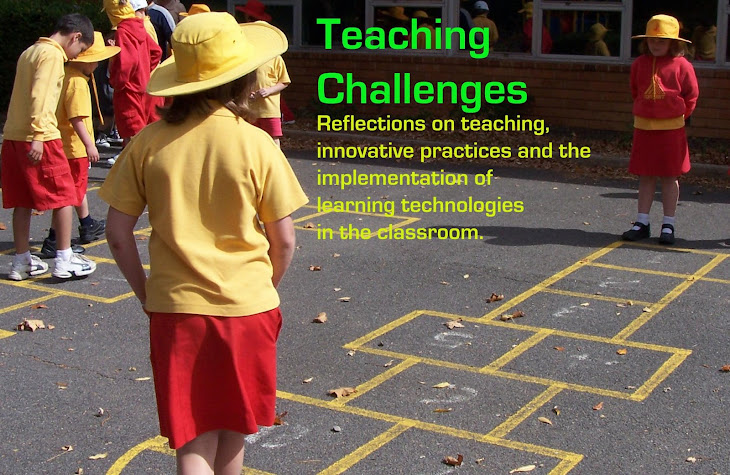
While teaching in New York City, I was amazed to see how easily young children can learn addition and subtraction facts through regular practice. I now use this new knowledge to train my students to add and subtract numbers more efficiently.
I used to feel that drills were not important in the teaching of Maths - that it was more important that they understand the process, than practice the drills. While I still believe that it is important for children to understand the process of addition and subtraction, I now see the value in using drills to support this.
Each week, I teach a new set of facts to my students. These may be addition facts, subtraction facts, or more recently multiplication facts. I teach my students the strategy they need, using hands on materials and demonstration models. Students then make a set of flash cards to practice these facts. For the rest of the week, my students are given a Fact Sheet to complete at the start of the Maths lesson. This worksheet contains 25 practice questions for the fact we are learning. They usually take about 6 minutes to complete this, and then if they finish early, they take out their fact cards and practice working out the answers. We go through the answers together at the end, and if there are any discrepancies, I demonstrate through illustrations on the Smart Board.
I found that by beginning with some of the simple facts, the class realises how 'easy' math facts are, and build the confidence to deal with the trickier facts later on. Adding zero, or adding one are great facts to do early on. They also like the subtracting zero, and subtracting a number from itself. I actually find that one of their most favourite sets is the doubles facts. They get very excited when they see how these connect with the multiplying by 2 facts. One of the most difficult strategies for some of my students was near doubles, or doubles + one, as it involves a couple of steps. I found that when students struggled with the concepts, they reverted to the use of their fingers to solve the equations.
I'm now a strong believer in the use of this focused drill time, for building confidence and fluency in manipulating numbers. My students now show excitement about playing with big numbers, and some of them are able to apply the strategies they have learnt to solve equations with one or more 2-digit numbers.
I used to feel that drills were not important in the teaching of Maths - that it was more important that they understand the process, than practice the drills. While I still believe that it is important for children to understand the process of addition and subtraction, I now see the value in using drills to support this.
Each week, I teach a new set of facts to my students. These may be addition facts, subtraction facts, or more recently multiplication facts. I teach my students the strategy they need, using hands on materials and demonstration models. Students then make a set of flash cards to practice these facts. For the rest of the week, my students are given a Fact Sheet to complete at the start of the Maths lesson. This worksheet contains 25 practice questions for the fact we are learning. They usually take about 6 minutes to complete this, and then if they finish early, they take out their fact cards and practice working out the answers. We go through the answers together at the end, and if there are any discrepancies, I demonstrate through illustrations on the Smart Board.
I found that by beginning with some of the simple facts, the class realises how 'easy' math facts are, and build the confidence to deal with the trickier facts later on. Adding zero, or adding one are great facts to do early on. They also like the subtracting zero, and subtracting a number from itself. I actually find that one of their most favourite sets is the doubles facts. They get very excited when they see how these connect with the multiplying by 2 facts. One of the most difficult strategies for some of my students was near doubles, or doubles + one, as it involves a couple of steps. I found that when students struggled with the concepts, they reverted to the use of their fingers to solve the equations.
I'm now a strong believer in the use of this focused drill time, for building confidence and fluency in manipulating numbers. My students now show excitement about playing with big numbers, and some of them are able to apply the strategies they have learnt to solve equations with one or more 2-digit numbers.
UPDATE: I found this great website where you can make and print out math fact sheets - Math Drills. com
(Photo by "Old Shoe Woman" at Flickr)








No comments:
Post a Comment
I'd love to hear your thoughts and questions. Please don't be shy...
:)